What is an Arduino Compatible Shield? Shields are boards that can be plugged into the Arduino development board to provide additional features and capabilities. There are many different shields available, with a wide range of functions.
In this guide, we will discuss what Arduino compatible shields are, what they can do for you, and how to choose the right one for your needs.
What is an Arduino Shield?
Once plugged in, these new features and capabilities can be used to make programming easier, expand the range of projects you can build with your Arduino, and create projects that are more complex than what was possible before. [1]
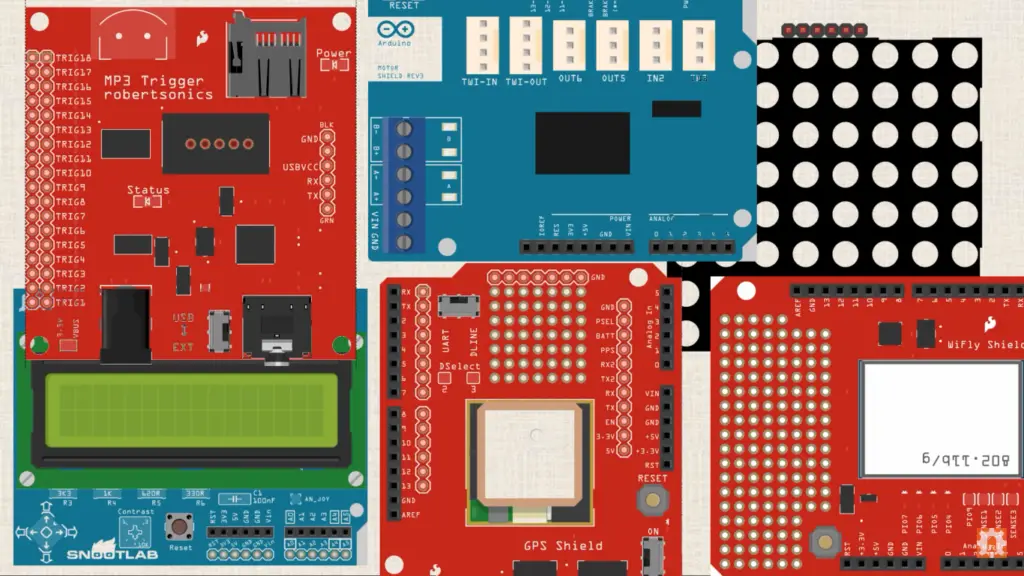
What Can an Arduino Compatible Shield Do For You?
An Arduino compatible shield can drastically expand the possibilities of what you can do with your Arduino board. Depending on the shield, you can:
- Control motors and servos with a motor control shield.
- Connect to Wi-Fi or Ethernet networks with a communication shield.
- Add additional sensors and inputs with a sensor shield.
- Create projects that interface with other devices such as phones and tablets using an I/O shield.
- Create projects with an Arduino on a single board using an All-in-One shield.
In addition to the features mentioned above, many shields also have other features, such as LED strips and real-time clock support.
Arduino Shield Combinations
Arduino compatible shields are great because you can combine them. For example, you could use a sensor shield to measure temperature and pressure, and then use a Wi-Fi shield to send the readings back to your computer for analysis.
Or you could create an autonomous robot with motor control, sensors for navigation, and Wi-Fi for remote control. There are endless possibilities!
You can use “stacking” to plug multiple Arduino compatible shields into one Arduino board. This makes it easy to create very complex projects without having to use a lot of different boards or wires. [2]

Physical Size and Form Factors
Arduino compatible shields come in different sizes and shapes. The most common size is the “shield” form factor, which fits directly onto an Arduino board. Other boards may be larger or smaller than this shield form factor, but they still work with an Arduino development board.
Some boards also use a connector to connect to the Arduino board instead of fitting onto it directly.
The size and shape of your shield will depend on what features and capabilities you need to add, as well as how much space you have.
Obstruction of Inputs and Outputs
When using an Arduino compatible shield, it is important to think about how it might obstruct the inputs and outputs.
Some shields, like those with motor control, can block access to other pins on the Arduino board that might be needed for other projects. To avoid this problem, make sure to look at the shield’s pin-out diagram before plugging it in.
Choosing the Right Arduino Compatible Shield
When selecting an Arduino compatible shield, the most important thing to consider is the features and capabilities it offers. Make sure you choose a shield that has all of the features and capabilities that you need for your project.
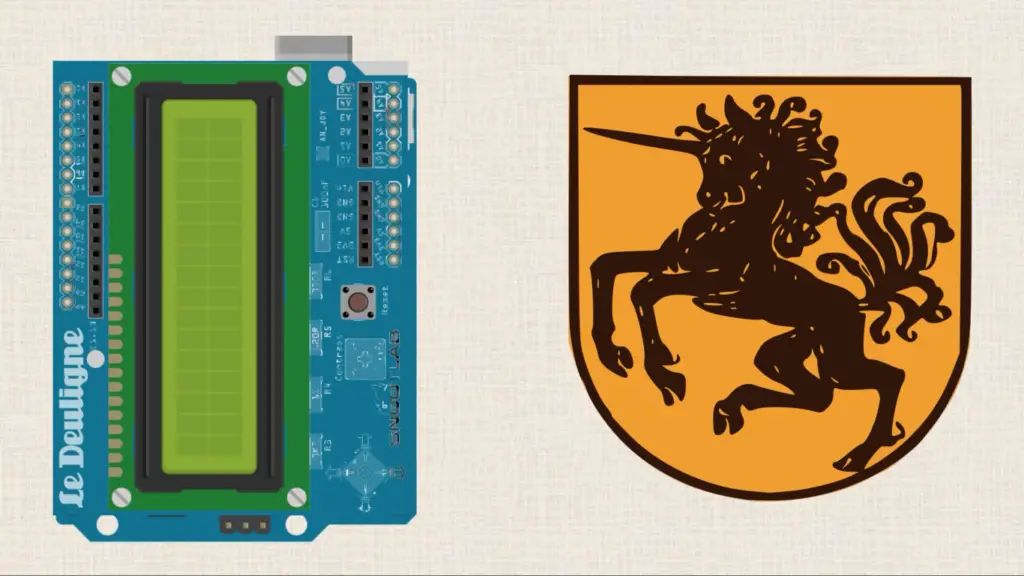
Also, make sure to check if there are any compatibility issues between the shield and the Arduino board you’re using. For example, some shields might not be compatible with certain Arduino boards.
In addition to these considerations, it’s also important to think about the physical size and shape of the shield. Some shields are large and bulky, while others are small enough to fit even in tight spaces. Consider your space constraints before making a purchase.
Finally, think about any other features your shield may need. For example, does it need Wi-Fi or Ethernet support? If not, some shields come with these features built-in. If it does need them, you will need to add additional components.
Pins Used by Arduino Compatible Shields
When selecting an Arduino compatible shield, it is important to look at the pins that it uses. Some shields may use certain that are not available on some Arduino boards. If you don’t check this before plugging in a shield, you might damage your board or cause unexpected behaviour.
In addition, some shields may use different pin configurations than others. Make sure to check the shield’s documentation for information about its required pin configuration.
Just be sure to take the time to select an Arduino compatible shield that is right for your project, and configure it correctly. Doing so will ensure that your project runs smoothly and reliably.
Software Support
Finally, you need to consider the software support for your Arduino compatible shield. Different shields may require different libraries or frameworks. Make sure you check the documentation for your shield and make sure the necessary software is available before making a purchase.
When you are looking for a shield to add to your Arduino project, it is important to consider the size, features, and pins that the shield uses. You should also think about the software support that is available. This will help you choose the right shield and make sure your project runs smoothly.
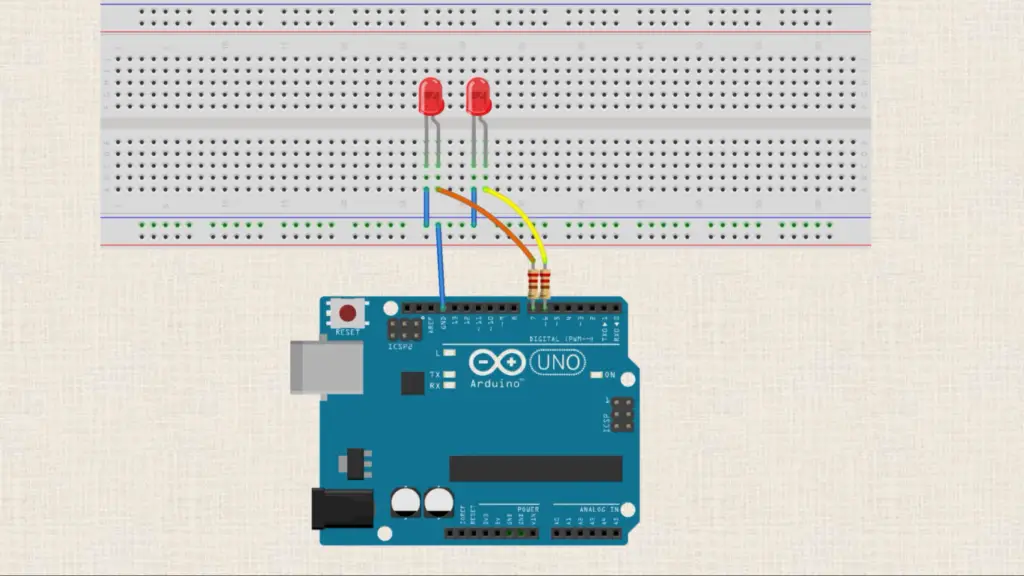
Does It Have Good Documentation?
Soldering May Be Required
When you are selecting an Arduino compatible shield, it is important to consider whether or not you will need to solder the components yourself. Many shields come with all of the necessary components pre-soldered on the board, but some may require you to do it yourself.
Make sure to check before purchasing a shield so that you can be prepared for any extra work that might be needed. [2]
Not All Around Shields Have the Same Pinout
In addition to checking that the components need to be soldered, you should also check the shield’s pin-out diagram. This will tell you which pins on the shield go where on the Arduino board. It is important to do this before plugging in a shield, because not all Arduino compatible shields have the same pin-out configuration, and some may even conflict with other pins on your board.
Stackable or Not Stackable Arduino Shields?
There are two types of Arduino compatible shields: stackable and non-stackable. Stackable shields are designed to be placed on top of each other, while non-stackable shields have taller components that do not allow them to be stacked. Each type has its own advantages, so choose which type would be best for your project.
Arduino compatible shields are a great way to expand the capabilities of your project. They allow you to do more without needing extra boards or wires. Before making a purchase, consider the size, features, pins used, software support, and stackability of the shield you plan on buying.
This will ensure that you get the right shield for your project and that it runs smoothly. With the right combination of hardware, you can create powerful projects with Arduino compatible shields.
Matching Hardware and Software Versions
Finally, it is important to make sure the hardware and software versions of your Arduino compatible shield match with those of your Arduino board.
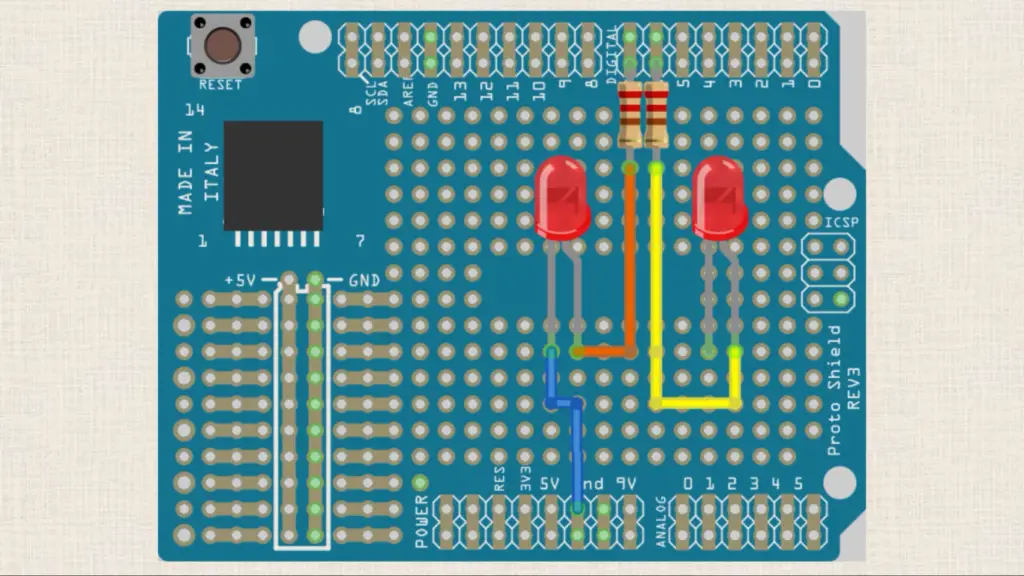
Different shields may require different versions of their associated software, so you should always check the documentation for any information about version compatibility before plugging in a shield.
Doing this will ensure that you don’t run into any unexpected issues when running your project.
FAQ
What is meant by Arduino shields?
An Arduino shield is an expansion board that plugs into the Arduino development boards. It provides additional functionality to the project, such as more digital or analog input/output pins, communication ports, and various sensors.
Which type of shields are compatible with Arduino?
Most shields are designed to be compatible with the popular Uno, Leonardo, Mega, and Nano boards. However, some shields may not be compatible with certain boards. You should check the documentation for any information about board compatibility before purchasing a shield.
What is a stackable Arduino shield?
It usually fits together with other shields, and it doesn’t require any extra wires or boards.
Do I need soldering for an Arduino compatible shield?
It depends on the shield. Some shields come with all of their components pre-soldered onto the board, while others may require you to solder them yourself. Make sure to check before purchasing a shield so that you can be prepared for any extra work that might be needed.
What are the benefits of using Arduino compatible shields?
Arduino compatible shields can provide a lot of benefits, like advanced functionality and flexibility. They also make it easier to add new components to your project without needing extra boards or wires.
Plus, they can save time by not having to create multiple projects with different features. With Arduino shields, you can quickly and easily add new capabilities to your project.
Are Arduino shields expensive?
The cost of an Arduino shield can vary depending on the components included and the functionality offered. Generally speaking, they range in cost from a few dollars to a few hundred dollars. Be sure to consider the cost of the shield when making your purchase.
If you want to buy an Arduino shield, you should consider these things: the size, features, pins used, software support, stackability, and version compatibility of the shield.
Make sure that the shield will work with the hardware you are using and that it has the features you need. With the right combination of hardware and shields, you can make powerful projects.
What are the shields of Arduino Uno?
The Arduino Uno can be used with a variety of shields, including the WiFi shield, Ethernet shield, Motor Control shield, LCD shield, and more. You can find a full list of supported shields in the Arduino documentation.
Arduino compatible shields are a great way to add extra features to your Arduino projects. When choosing a shield, it is important to consider its size, features, and how many pins it uses.
It is also important to make sure the shield’s hardware and software versions match those of your Arduino board. With a little preparation, you can create amazing Arduino projects with compatible shields.
Why is it called a shield Arduino?
The name “shield” comes from the way these boards look: they fit on top of your Arduino board, providing an extra layer of protection.
They are also known as shields or add-on modules because of their function; they provide additional capabilities and features to the Arduino board. They are an excellent way to add extra functionality to any project.
Can I use multiple shields on my Arduino?
Yes, you can use multiple shields with your Arduino board. But it is important to make sure that all the shields are compatible with each other and will not interfere with each other’s signals. Be sure to read the documentation for each shield before purchasing and using them together.
What is the purpose of shields for Arduino?
Shields for Arduino are devices that you can add to your project to expand its capabilities. They provide extra digital or analog input/output pins, communication ports, and sensors. This allows you to create more complex projects without needing extra boards or wires. With the right combination of hardware, you can create powerful projects with Arduino shields.
When creating a project, it is important to be aware of the different options that are available to you. Arduino-compatible shields come in different types, and each type has its own advantages and disadvantages. By taking the time to understand what is available, you can make an informed decision when choosing a shield for your Arduino project.
How do I make an Arduino shield?
In order to make an Arduino shield, you need to understand how electronics and programming work. You will need to know how the Arduino board works and be able to write code for it. Additionally, you will need to know how to solder components together in order to create the circuit board design.
There are many online resources that can help you learn the basics of Arduino programming, electronics, and soldering. Once you have a basic understanding of how it all works, you can start designing your own Arduino shield.
You will need to research the components needed for your design and create a schematic diagram detailing how the circuit should be built. Once the schematic is finished, you can solder the components together on a PCB board and then write code to make it work. With enough practice and dedication, you can build your own Arduino compatible shield.
Arduino shields are devices that can be attached to Arduino boards to add additional features. They are relatively cheap and come in a range of shapes and sizes, so you can choose the one that best suits your project.
Before buying an Arduino compatible shield, it is important to consider its size, features, software versions, and compatibility with your board.
With the right preparation and knowledge, you can create amazing projects using Arduino shields.
Useful Video: What is an Arduino Shield?
Conclusion
An Arduino compatible shield is an electronic board that can be attached to the top of an Arduino development board to add functionality. There are a wide variety of shields available, with different capabilities.
The common shields include those that allow for wireless communication, addition of motors or LEDs, and measurement of environmental data. In order to make an Arduino shield, you need to have a good understanding of electronics and programming.
By taking the time to understand how Arduino shields work, you can make informed decisions when buying them for your projects. Whether it’s for remote control, motor control, or advanced sensing capabilities, there is an Arduino compatible shield that can help you make the most of your project.
References
- https://www.programmingelectronics.com/what-is-an-arduino-shield/
- https://www.dummies.com/article/technology/computers/hardware/arduino/an-overview-of-arduino-shields-258590/





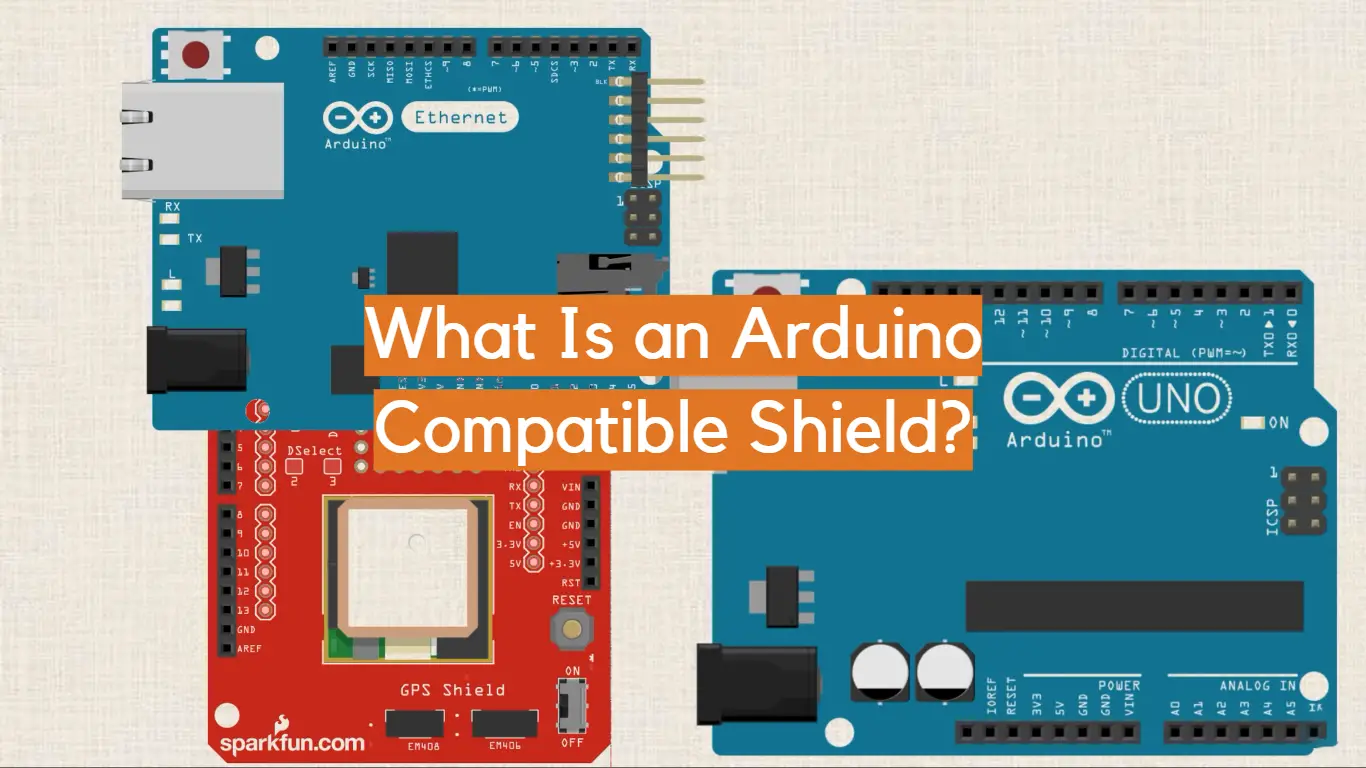







Leave a Reply